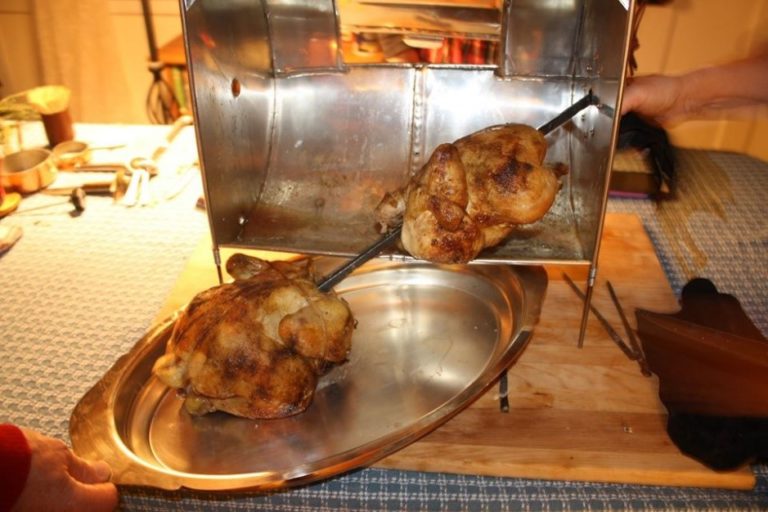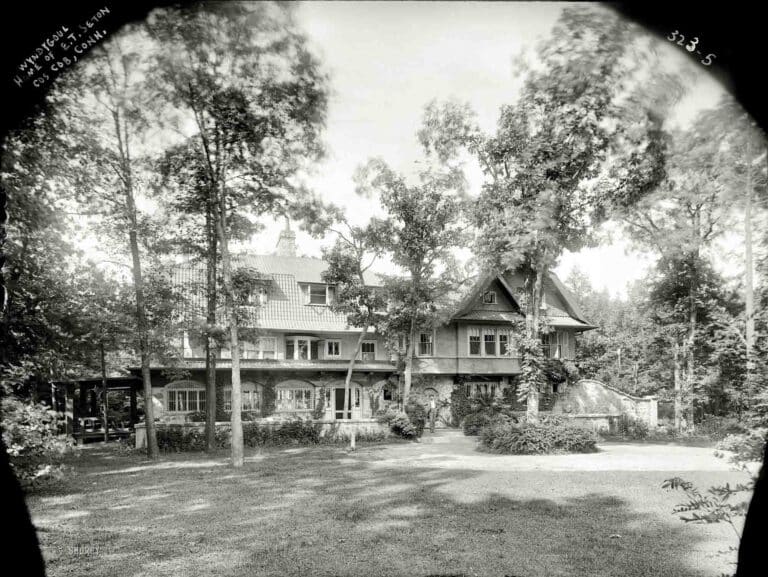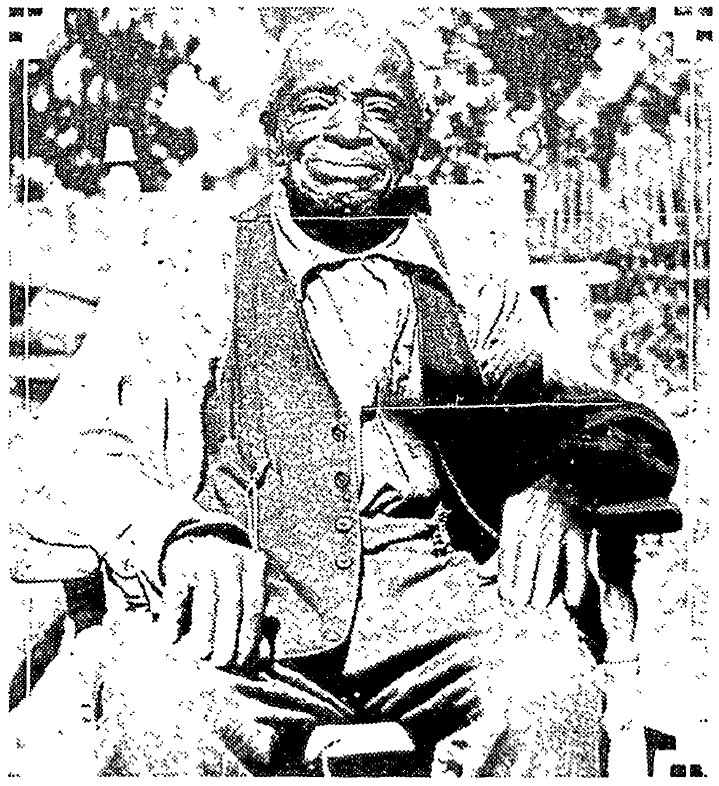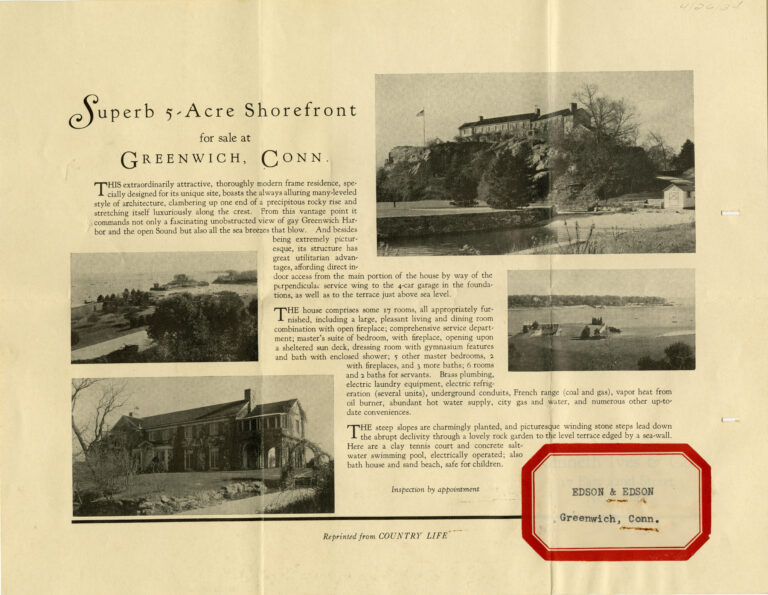The hearth was the heart of a colonial home. It provided people with warmth, light, and most importantly, food. Almost everything a colonial family ate would have been prepared on the hearth. In this mini-series, I will show you how I make some of my hearth cooking staples.
Please note that not all fireplaces, even in colonial buildings, are equipped to be a cooking hearth. I am also a professional with years of training. Please do not try this at home.
Today’s recipe: Chicken two ways
Chicken #1: Chicken on a String
One of the earliest methods used to cook chicken was by hanging it near a fire using string!
Preparations for cooking with this method start a few days ahead of time by thoroughly soaking the string. After that, I carefully tie up the chicken, hang it next to the fire, and place a pan beneath it to catch the drippings. If the string is not thoroughly soaked, it will catch fire and the chicken will end up in the flames and ashes!
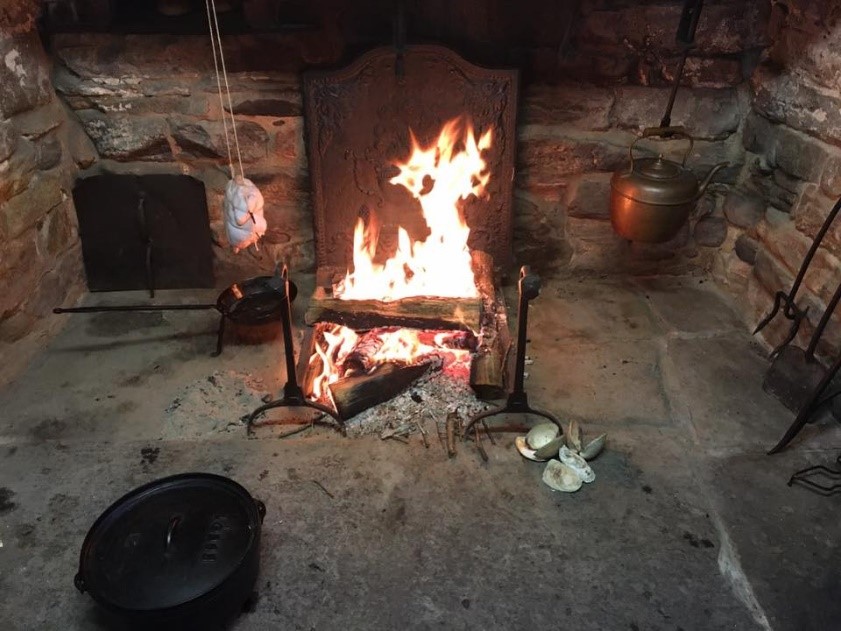
Take a good look at the picture above: what are some problems you foresee?
Hint: If left alone, the chicken in this picture would never be safe to eat!
The half nearest the fire would cook to a crisp, while the other half would remain raw, no matter how long I left it up there. So what do I do?
Answer: Spin the chicken!
In colonial New England, a child usually had the job of reaching into the hearth and twisting the strings that suspend the chicken. If the child did this well, the chicken would spin as the strings untwisted and the centrifugal motion of the spinning would cause the strings to twist back the other way. In this way, the chicken would spin unaided for a couple of minutes. If the child did not do this well, they would have to re-twist the strings every minute.
It takes 4-5 hours to cook a chicken using this method. Think of how many times that string must be re-twisted! It is hard to do anything else when cooking a chicken this way.
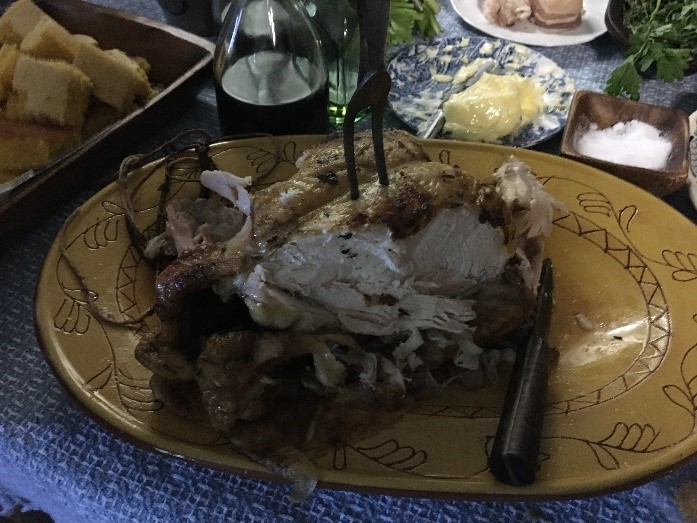
Chicken #2: Tin Reflector Oven
As one might imagine, our ancestors were desperate for a way to cook chicken that did not involve spinning it thousands of times for hours. So it will be no surprise that when the tin reflector oven, often called a “tin kitchen” at the time, was invented in the mid-1700s, it quickly found its way into most American homes.

The tin reflector oven reduced the amount of labor required to cook chicken: no string to soak and no need to truss the chicken. The chicken would be plucked and cleaned, then skewered with a slender pointed rod (a spit) and placed in the oven next to the fire. Occasionally someone would have to turn the spit!
The semi-cylindrical shape of the tin reflector oven traps the heat from the fire and cooks the chicken more quickly than can be done using the string method. The drippings from the meat collect at the bottom of the oven without the need for an additional pan. Using the spit, a cook can spin the chicken as much as needed with little effort.


